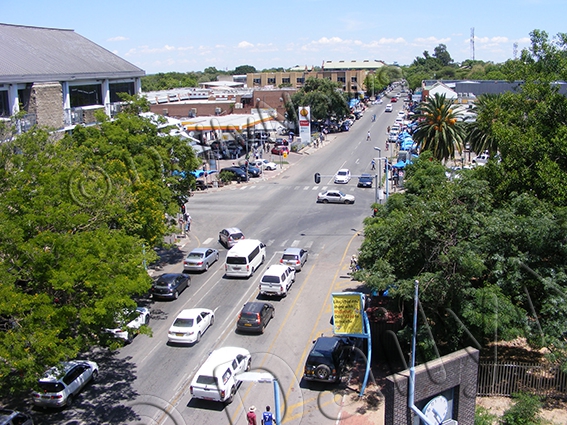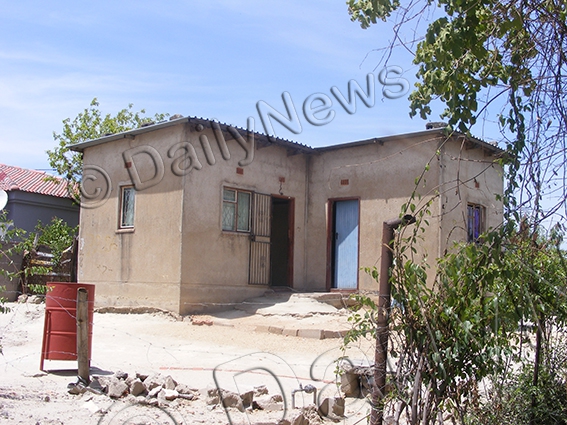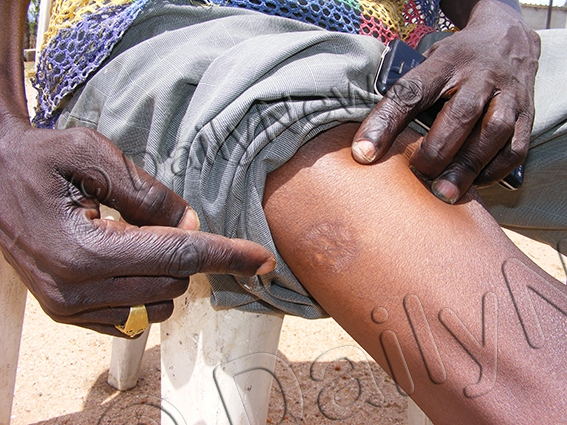Francistown Safe haven for struggle heroes
09 Jan 2024
Hidden among the dusty streets of Francistown, is a story that has remained untold for generations. From its days as a hub of the liberation struggle in Southern Africa, to its current role as a thriving commercial centre, Francistown has witnessed some significant moments in the region’s history.
One story has been largely overlooked is of the time when Francistown was ‘home’ to two of the most influential figures in Southern Africa’s history. In the early 1980s during Namibian’s liberation struggle, former Namibian President, Sam Nujoma was in exile and sought refugee in Francistown.
Just a few years later, another future leader, who would go on to become Namibia’s third president, Hage Geingob arrived.
Nujoma was the political leader, while Geingob was the military commander. This was a crucial time in Namibian history, as the country was fighting for its independence from South Africa and the small town of Francistown became a haven for Namibian refugees.
In Francistown, Nujoma was not only working to advance the cause of Namibian independence, but was also making important connections with other African leaders, including Robert Mugabe, who would later become the President of Zimbabwe.
Many of these refugees spent nights in a ‘hall-like structure’ commonly known as the “White House” in Blue Town location adjacent to Phillip Matante International Airport.
Priscilla Kaoyao, a Motswana of Herero origin, who lived in the area at the time recalls seeing Nujoma arriving at the structure late at night and leaving early in the morning.
“At first I did not know that it was Sam Nujoma until one refugee called him by his name and informed us that he was the leader of SWAPO,” said Kaoyao .
As for Geingob, who is the current President of Namibia, Kaoyao said he had arrived earlier and spent some few days at the structure before heading for Lusaka, Zambia. Ms Kaoyao said most of the refugees who stayed in this structure were mostly Namibians and some of them had children with Batswana due to their long stay in Blue Town.
“The hall, was partitioned into rooms and was big enough to accommodate over 50 people,” said Ms Kaoyao, whose house now stands where the structure used to be. “Later towards Namibian independence, the structure was demolished by the Francistown Council and part of the space was allocated to me,” she said.
She explained that Francistown was a sanctuary not only for the Namibian refugees but also for other refugees from countries such as South Africa, during the Apartheid era and Zimbabwe during the Ian Smith regime war.
“Most of these refugees, especially from Namibia and South Africa were enroute to Zambia where the headquarters of the African National Congress (ANC) used to be. Despite the risk, we felt compelled to help those in need and in the face of danger we chose compassion and kindness,” she added.
Ms Kaoyao said even though they knew that they were risking their lives, they also knew that providing safety for the refugees was the right thing to do. “Today, we continue to honour the city’s history as a place of refuge, and the city remains a symbol of peace, justice, and freedom for all who seek it,” she added.
Another figure close to the events, Mr Soul Moremi said in the face of danger, Blue Town residents chose to stand up for what was right, noting that the ‘White House’ was not the only place that provided refuge to those who fled persecution from their countries. He said despite the risks to his own life, one resident of Blue Town, Mr Thotologolo Skoti opened his home for those in need of safety from neighbouring Zimbabwe during the Ian Smith era.
“Even after his home was bombed, Skoti continued to provide shelter for those who were fleeing violence and persecution and this resident is a true hero. His actions demonstrated the power of compassion and the importance of standing up for what is right, no matter the cost,” he added.
Mr Moremi said such people should be acknowledged because their courage helped to preserve the lives of countless people, and the city of Francistown should be proud of their bravery.
“These individuals are a testament to the power of human compassion and deserve to be remembered and celebrated,’ he added. Quizzed on how they should be honoured, Mr Moremi said a fitting way to honour them would be to bestow upon them a presidential award. The award, he said, could also include a financial compensation package to help those who may have suffered losses as a result of their actions.
He explained that people like Mr Skoti are a true example of a selfless and courageous individual. “In the eyes of many, he is a hero who risked his own safety to help those in need. His compassion and generosity has made a lasting impact on the lives of those he helped, and he is a shining example of the best of humanity,” he said.
He explained that Mr Skoti is not only a remarkable man, but a role model for all who strive to make the world a better place. “His kindness and bravery will never be forgotten,” he added. A moving encyclopedia, Mr Moremi said the city of Francistown is not only known for providing refuge to the Namibians and Zimbabweans, but also for other important events that happened in the past. He explained that the first fatal aviation accident happened in Francistown in 1962 making it one of the most significant events in the history of Francistown.
“The tragic plane crash in 1962, which was carrying 74 Malawians migrant workers home from South Africa, was indeed a significant event in the history of Francistown,” said Mr Moremi. He said the four-engine plane was soaring in the sky above Monarch when suddenly the engines began to sputter smoke before the pilot tried to re-direct it back to the airport. “Unfortunately it was too late and it crashed near the old weigh-bridge and almost all the passengers died on the spot,” he shared.
Mr Moremi said though he did not attend their funerals, most of the passengers were buried in Francistown at the Kgapamadi cemetery. He explained that the accident had an impact on the country because in the aftermath of the accident, steps were taken to improve aviation safety and infrastructure.
‘The crash led to scrutiny of working conditions for migrant labourers and the tragedy also served as a reminder of the risks associated with migration, scrutiny and the need for the company to ensure the safety and well-being of their citizens,” he added. The crash, he said, also brought to light the difficult conditions that many migrant workers faced, including long hours, low wages, and dangerous working conditions. “It was a sobering reminder of the dark side of labour migration, and the toll it can take. Even today, the crash is remembered as a traffic moment in the history of Francistown and is also a reminder of the importance of safety and security in the air,” said Mr Moremi.
He also indicated that another shocking event that left some people seriously injured is the bombing of a club in Francistown, near the Nyangabgwe hill in 1982.
“The incident took place at a popular club called the International Sports Bar, commonly known as Mophane Club, and it was believed to be a target attack by a Zimbabwean hit squad, looking for a certain ring leader known as Makepesi and his friends.
Mr Moremi, said the incident happened at around 10pm when a Gaborone-based band called In Crowed was performing a song called Too many people are dying by Jimmy Cliff. “It was as if fate had conspired to make the tragedy even more tragic. As the lyrics of the song Too many people are dying and suffering filled the air, the bomb went off, causing chaos and devastation,” said Mr Moremi.
Mr Moremi, who suffered like a bullet wound on the right thigh, said people started to cry out in pain and that their lives had changed in an instant.
“The physical and emotional scars of the bombing were evident in those who were injured in the rush to escape and most of us were attended at the Jubilee Hospital the same night,” he added.
He said later on, some said a white soldier was seen standing at the top of Nyangabgwe hill, whom they suspected is the one that bombed the club. Mr Moremi said the club was a popular gathering place for the people of Francistown, especially on weekends, and the fact that it was targeted by the Zimbabwean regime added to the tragedy of the bombing.
He said the Nyangabgwe hill, which was used as a hiding place by the soldiers, has become a symbol of violence and terror and remains a reminder of the bravery and resilience of the people of Francistown, who have endured so much in the fight for freedom and justice.
He disclosed that the tragic event remains a painful memory for many in the city, and it serves as a reminder of the dark legacy of apartheid in the SADC region.
Indeed, the histories of Francistown and Lobatse are inextricably linked, and both cities played crucial roles in the struggle for democracy and freedom in Southern Africa.
Lobatse was a hub for exiled South Africans during the Apartheid era, as the town provided refuge for many anti-apartheid activists, including former and first democratic elected president, Dr Nelson Mandela.
The two area share a legacy of resistance and resilience, and their stories are an important part of the history of Southern Africa.
These stories of solidarity and compassion demonstrate the strong bonds between Botswana and its neighbours, and show how the cities of Lobatse and Francistown played an important role in shaping the history of the region. ENDS
Source : BOPA
Author : Thamani Shabani
Location : FRANCISTOWN
Event : Interview
Date : 09 Jan 2024








